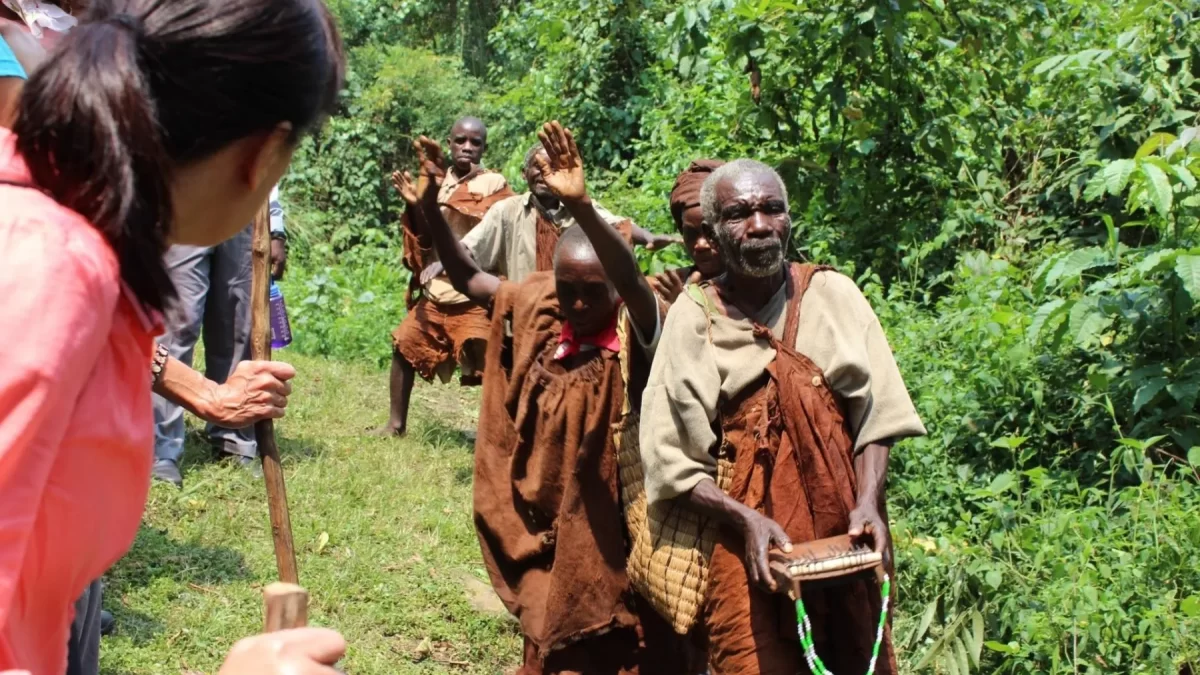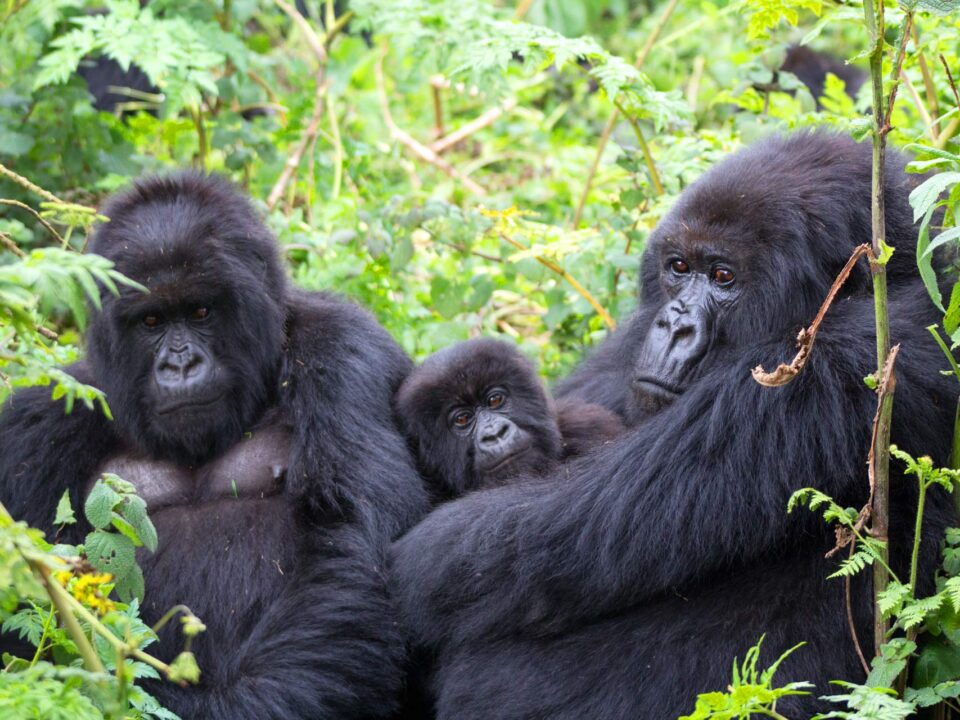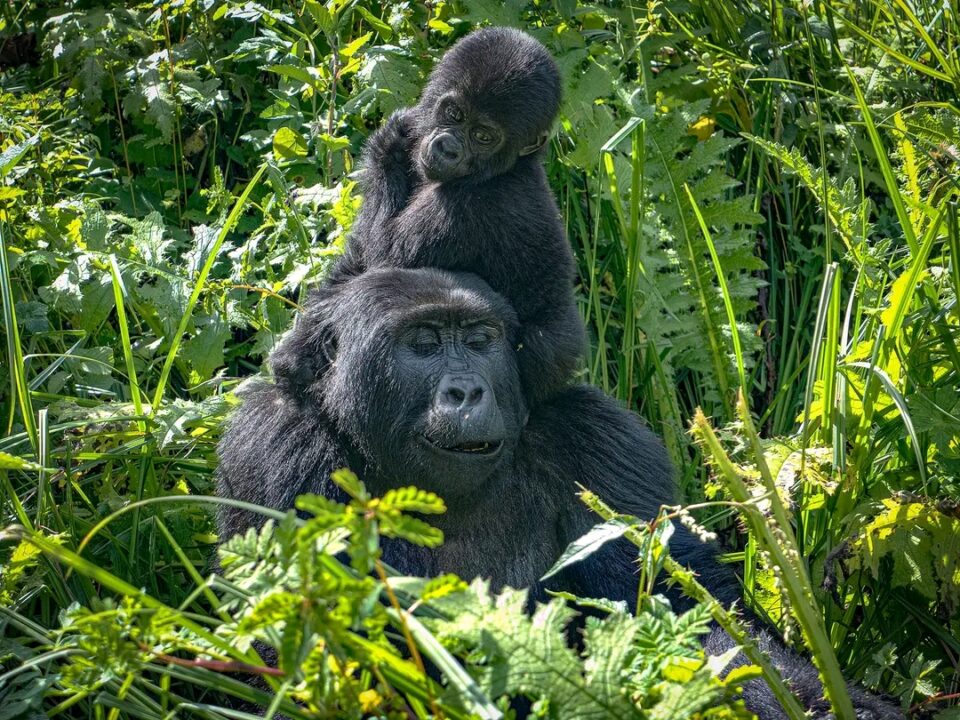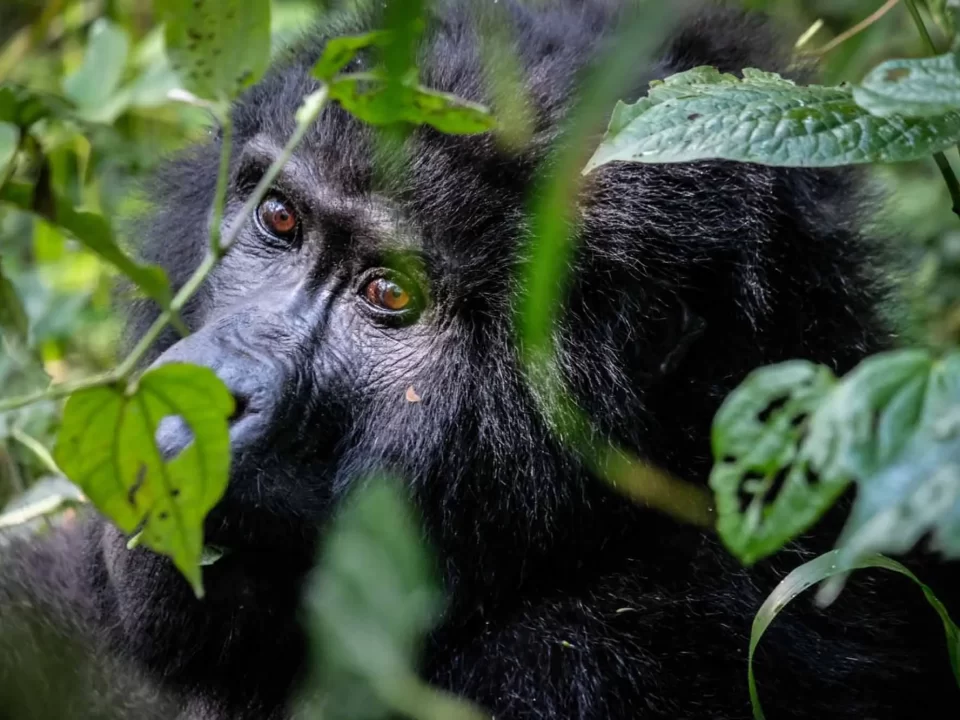Bwindi Community Walks and Cultural Experience

Owen Falls Dam Jinja Uganda
September 8, 2023
Nairobi Safari Walk Kenya
September 8, 2023Bwindi Community Walks and Cultural Experience – A Journey with Ride 4 a Woman in Buhoma
Exploring Bwindi’s Rich Cultural Tapestry
The community surrounding the pristine Bwindi forest is brimming with diverse activities and cultural experiences just waiting to be discovered. As you embark on your journey, one captivating option is to delve into the Batwa experience – a people who called the forest home for countless generations. Here, you will have the unique opportunity to retrace their footsteps, revisiting the forest to understand how they coexisted harmoniously with gorillas and other wildlife for centuries. This adventure encompasses a variety of walks, including the Buniga Forest nature walk in Nkuringo, a forest reserve adjacent to Bwindi Impenetrable National Park, the Nyundo community Eco trails, and the King Bakyara’s waterfall trail. Additionally, you can explore the village Aquaponics project in collaboration with Conservation through Public Health (CTPH). The Buhoma community tours will take you through intriguing areas of interest, handcraft shops, the Batwa community, a traditional healer’s domain, a primary school, and unveil the secrets of banana transformation into juice, beer, and gin, with delightful tasting experiences along the way.
Discovering Bwindi’s Natural Majesty
Bwindi Impenetrable National Park, nestled in the southwestern region of Uganda, is a treasure trove of natural wonders. Situated on the edge of the rift valley, often referred to as the impenetrable forest, this national park shares its border with the Democratic Republic of Congo (DRC) on the western side. The nearest main town, Kabale, lies southeast of the Park, a mere 29 kilometers away by road. Encompassing a vast area of 331 square kilometers, Bwindi Impenetrable National Park is perched in the highest reaches of the Kigezi highlands, boasting altitudes ranging from 1,190 to 2,607 meters above sea level. A remarkable 60% of this magical park stands tall at elevations exceeding 2,000 meters above sea level, with the highest point being Rwamunyonyi hill at the eastern edge and the lowest point situated at the park’s most northern tip.
Guardians of the Mountain Gorillas
Bwindi Impenetrable Forest gained global prominence primarily because of its renowned Gorilla tracking experiences. Within its lush depths, it serves as the cherished habitat for more than half of the world’s remaining Mountain Gorilla population. These gentle giants, an endangered species, find refuge in this forest, with over 360 individuals out of the estimated 800 plus Mountain Gorillas worldwide. Their precarious existence is attributed to the threats of poaching, habitat loss, and diseases. Remarkably, this National Park contributes significantly to the revenues of the Uganda Wildlife Authority, standing out as one of the highest revenue generators among all the National Parks in Uganda.
Gorilla Tracking: A Once-in-a-Lifetime Experience
Bwindi Impenetrable National Park is celebrated globally for its unrivaled Gorilla tracking experiences, a true jewel in the crown of East Africa’s tourist attractions. The park hosts multiple Gorilla families, and each family can be visited by a maximum of eight tourists per day. These families are distributed across four sectors: Buhoma (Northern part), Ruhija (Eastern part), Nkuringo (Southern part), and Rushaga (Southern part). All these sectors fall under the protective umbrella of the Uganda Wildlife Authority, the government body responsible for managing Uganda’s National Parks.
A Pristine Rainforest Ecosystem
Bwindi Impenetrable National Park epitomizes the tropical rainforest environment. It experiences an annual mean temperature fluctuating between a minimum of 7–15°C and a maximum of 20–27°C. The park receives its annual share of rainfall, which ranges from 1,400 to 1,900 millimeters. The heaviest downpours occur between March to April and from September to November. The park’s allure extends beyond its Gorilla inhabitants, offering captivating attractions such as waterfalls, swamps, and rivers that flow north, west, and south, including the likes of River Ntegyere and River Ishasha.
A Historical Transformation: From Crown Forest to Protected Park
The journey of Bwindi National Park dates back to 1932 when it was initially named as a crown forest. At that time, it comprised two distinct blocks, the north and the south block, with the south block designated as the Kasatora crown forest. The combined area encompassed 207 square kilometers and fell under the jurisdiction of the Ugandan government forest reserve.
However, a pivotal transformation occurred in 1991 when Bwindi Impenetrable National Park was formally established. Covering an expansive area of 330.8 square kilometers, the park became the sanctuary for numerous Mountain Gorillas. This conservation effort had a significant impact on the Batwa people, who were no longer permitted to enter the National park.
Diverse Activities Amidst Nature’s Splendor
Bwindi National Park offers a plethora of activities to explore its breathtaking natural beauty. Guided nature walks take you through a maze of trails, unveiling the forest’s hidden treasures, including waterfalls, swamps, and rivers. These walks also offer opportunities to spot other primates, such as black monkeys, blue monkeys, and colobus monkeys, enhancing your connection with nature beyond Gorilla trekking.
Beyond Trekking: Gorilla Habituation Experience
For those seeking a deeper understanding of Gorilla behavior, Bwindi National Park offers the Gorilla Habituation Experience. This four-hour adventure allows you to join researchers and delve into the world of Gorillas, learning about their habits and daily activities. The Gorilla Habituation Permit is priced at USD 1500.00 per person, and the four-hour duration commences upon finding fresh Gorilla trails.
A Haven for Birdwatchers
Bwindi is a paradise for bird enthusiasts, boasting an impressive array of 346 bird species. Birdwatching here offers ample time to observe these winged wonders, including honey guides, dusky crimsoms, yellow eyes, black fly catchers, bar-tailed trogons, and numerous other captivating species.
Accessing Bwindi and Supporting Local Communities
Bwindi Impenetrable National Park can be accessed from Kampala/Entebbe, or alternatively, through Rwanda from Kigali International Airport, offering a shorter 4-5 hour drive compared to the 8-10 hour journey from Entebbe International Airport. The park welcomes visitors year-round, ensuring every season provides its unique charm. We proudly collaborate with Ride 4 a Woman in Buhoma, contributing to the development of the local community surrounding Bwindi forest, with a particular focus on empowering single mothers in the region.




